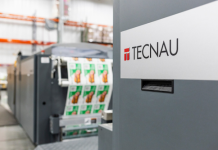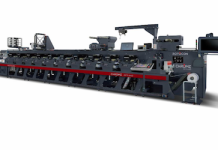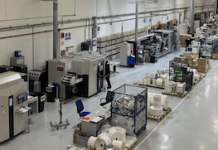Laurel Brunner of the Verdigris Project writes that mercury is a seriously nasty neurotoxin that is steadily being regulated out of products, including in the fluorescent lamps used in the printing industry for ink curing.
It’s been a long time coming but the end of mercury arc lamps is definitely in sight. Bodies from the US Environmental Protection Agency to the United Nations and the European Union are all banning the use of mercury in products mostly by the end of 2025.
UV curable ink chemistries have been optimised for curing using mercury arc lamps for decades, so the mercury arc lamp habit is well-entrenched in the printing business. The lamps have been the workhorses of curing applications and used in a wide range of applications for many years. But times and technologies change. The good news is that we have a solid market in LED curing lamps and inks. Printers still using technologies that use mercury should be thinking about making the leap into LED. Fluorescent lamps will be around for the next couple of years, but printing needs to accelerate its adoption of LED based alternatives for ink curing. The end of 2025 marks the end of exemptions for the use of mercury in products such as fluorescent lamps.
Printers have a few options, such as stockpiling replacement lamps which quite a few companies are doing. But this ties up capital, distorts the market, and only defers the inevitable. What is far more sensible is to make the transition now and to get used to the new reality. Fortunately, LED lamps have several compelling attractions, in that they require barely any time to warm up and last far longer than fluorescent lamps. They can deliver an extremely smooth spectral curve that can be read without needing a high resolution measurement device. They also generate much less heat, so the range of substrates that can be printed is greater, and with LED lamps there is no risk of UV radiation, which isn’t good for your health.
New investment carries its own risk, but when it comes to inks and curing, staying within the rules has to be a good idea. The matter of mercury arc versus LED can get complicated, so it’s also good that regulations have simplified the argument. Banning the use of mercury is in the interests of us all, so we should welcome both the rules and the development of LED based alternatives.
This article was produced by the Verdigris Project, an industry initiative intended to raise awareness of print’s positive environmental impact. Verdigris is supported by: FESPA (www.fespa.com), Fujifilm (www.fujifilm.com/sustainability/), HP (www.hp.com), Kodak (www.Kodak.com/go/sustainability), Practical Publishing (www.practicalpublishing.co.za), Miraclon (https://miraclon.com), Unity Publishing (http://unity-publishing.co.uk) and Xeikon (www.xeikon.com).
THE VERDIGRIS PROJECT
http://verdigrisproject.com/





















